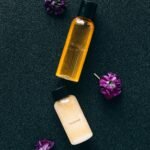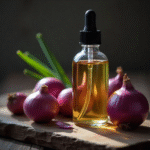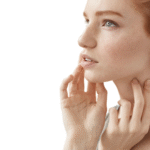Damaged hair can be a real struggle. You don’t always need to cut it.
There are ways to restore your hair’s health without reaching for the scissors. It may be discouraging and stressful to deal wi
th damaged hair. Split ends, dryness, and breakage are common issues many face. Cutting your hair might seem like the only solution, but it isn’t.
There are plenty of methods to repair and rejuvenate your locks, helping you keep your length and get back that healthy shine. In this post, we’ll explore effective ways to fix damaged hair. You’ll learn how to nourish and protect your hair, promoting strength and beauty. Let’s get started and learn how to improve the health of your hair without sacrificing its length.
Identify Hair Damage
The first step to repairing the condition of your hair is recognizing damage. It is crucial to recognize the signs and understand the causes. This knowledge helps you choose the right treatments and avoid further damage.
Common Signs
Damaged hair often looks dull and frizzy. Split ends are another clear sign. Check if your hair breaks easily. Rough texture and tangles are common indicators. Hair with these signs needs immediate care.
Causes
Several factors cause hair damage. Heat styling tools like straighteners and curlers dry out hair. Over-washing strips natural oils. Chemical treatments like coloring weaken hair. Environmental elements like wind and sun can have an impact. Knowing these causes helps in preventing future damage.
Proper Hair Washing
Proper hair washing is crucial for fixing damaged hair without cutting it. A lot of people don’t realize how important hair washing is. Incorrect washing can lead to more damage. This section will cover how to wash your hair correctly to promote health and recovery.
Gentle Shampoos
Choose shampoos that are gentle on your hair. Avoid products with harsh chemicals. Alcohol, parabens, and sulfates can cause your hair to become dry. Look for shampoos with natural ingredients. These shampoos clean your hair without stripping its natural oils. Your hair needs these oils to stay healthy.
Washing Frequency
Don’t wash your hair too often. Over-washing can remove essential oils from your hair. These oils keep your hair moisturized and strong. Aim to wash your hair two to three times a week. Adapt to your lifestyle and hair type. You may need to shampoo your hair more regularly if it is greasy. If it’s dry, wash less often.
Deep Conditioning Treatments
Deep conditioning treatments provide moisture and repair damaged hair. Nourishing ingredients strengthen strands, leaving hair smoother and healthier. Regular use can fix hair without needing a trim.
Deep conditioning treatments can be the ultimate savior for your damaged hair. They work by penetrating deep into your hair strands, providing essential nutrients and moisture. With regular use, these treatments can restore your hair’s natural shine and strength without the need for a haircut.
Diy Masks
Creating your own hair masks at home can be both fun and effective. Avocado and honey mask is one well-liked alternative. Simply mash one ripe avocado and mix it with two tablespoons of honey. Focus on the ends of your damp hair while applying this combination. Leave it on for 30 minutes before rinsing thoroughly. Another great DIY mask is the coconut oil and egg yolk treatment. Combine two tablespoons of coconut oil with one egg yolk. Apply this mixture evenly through your hair, then cover with a shower cap. Let it sit for 20 minutes, and then wash your hair with a gentle shampoo.
Store-bought Options
There are many good store-bought alternatives if do-it-yourself projects aren’t your style. Look for deep conditioners that contain ingredients like keratin, argan oil, and shea butter. The nutritious qualities of these substances are well established. One highly recommended product is the Aussie 3 Minute Miracle Moist Deep Conditioner. It’s quick, easy to use, and can leave your hair feeling silky smooth. Another great option is the Olaplex No. 5 Bond Maintenance Conditioner, which helps repair and protect damaged hair bonds. Have you tried any deep conditioning treatments before? If not, now may be the ideal moment to try them. Your hair deserves some TLC, and these treatments can make a noticeable difference.
Hair Oils And Serums
Serums and hair oils are crucial for repairing damaged hair. They nourish, protect, and revive strands without needing a haircut. These products provide moisture, shine, and strength, helping you achieve healthier hair. Let’s explore the types of oils and how to apply them effectively.
Types Of Oils
Different oils offer unique benefits for damaged hair. Antioxidants and vitamins abound in argan oil. It repairs and hydrates dry hair. The hair shaft is deeply penetrated by coconut oil. It prevents protein loss and adds moisture. Jojoba oil imitates the scalp’s natural oils. It balances oil production and soothes dryness. Olive oil is packed with fatty acids. It nourishes and strengthens weak hair strands. Each oil targets specific hair concerns.
Application Tips
To achieve the finest outcomes, application must be done correctly. Warm the oil slightly before use. This helps it penetrate better. Put a little bit on your hand’s palm. To evenly spread the oil, rub your palms together. Work your way up to the roots from the end. Avoid applying too much oil to the scalp. This can make hair look greasy. Use a wide-tooth comb to distribute the oil evenly. Give the oil a minimum of half an hour. Leave it on overnight and rinse it off in the morning for a more thorough treatment. Use these tips for optimal benefits.
Avoiding Heat Damage
Having damaged hair can be frustrating, especially when you want to avoid cutting it. One key strategy to prevent further damage is avoiding heat damage. Heat from styling tools can cause significant harm to your hair. Here’s how you can avoid heat damage and keep your hair healthy.
Heat Protectants
Using heat protectants is crucial. Your hair is shielded from the heat by these items. This reduces the risk of damage.
Select a heat protectant based on the type of hair you have. Before using any heat styling equipment, apply it. This small action can have a significant impact. Personally, I noticed a decrease in split ends after I started using a heat protectant. It’s a small change but highly effective.
Alternative Styling Methods
Consider alternative styling methods that don’t involve heat. Air drying is a great option. It’s gentle and doesn’t cause damage.
Braids and buns can style your hair without heat. They can appear fashionable and are simple to complete. I recall my first attempt at overnight braids. My hair had beautiful waves in the morning without any heat damage. Have you ever tried heatless styles?
By avoiding heat damage, you can protect your hair and keep it looking great. What’s your favorite heatless styling method?
Minimizing Chemical Exposure
Taking care of damaged hair without resorting to cutting it involves multiple steps. One of the most crucial steps is minimizing chemical exposure. Chemicals in hair products can weaken and break your hair, making it look frizzy and unhealthy. By reducing the number of chemicals you expose your hair to, you can help it recover its natural strength and shine.
Reducing Dye Use
Dyeing your hair frequently can cause significant damage. The chemicals in hair dye can strip your hair of its natural oils, leaving it dry and brittle. If you love changing your hair color, consider using natural dyes like henna or indigo. These options are less harsh and can actually improve the texture of your hair.
Another effective method is to extend the time between dye sessions. Instead of touching up your roots every few weeks, try stretching it to every few months. This gives your hair time to recover and reduces the overall chemical load.
Have you ever tried a color-depositing conditioner? These products can refresh your hair color without the need for harsh chemicals. It’s a great way to maintain your color and keep your hair healthy at the same time.
Choosing Safer Products
Not all hair products are created equal. Many shampoos, conditioners, and styling products contain sulfates, parabens, and other harmful chemicals. Switching to products with natural or organic ingredients can make a world of difference for your hair’s health.
When you shop for hair care products, look for labels that say “sulfate-free” and “paraben-free.” These products are gentler on your hair and scalp. Also, consider using leave-in conditioners and hair masks that contain nourishing ingredients like argan oil, coconut oil, and shea butter.
Have you checked the ingredient list on your favorite hair product lately? You might be surprised at the number of chemicals it contains. Opt for products with shorter ingredient lists and more recognizable names. Your hair will thank you.
Minimizing chemical exposure is a practical and effective way to repair damaged hair. By reducing dye use and choosing safer products, you can help your hair regain its natural beauty. What changes will you make to your hair care routine today?
Healthy Hair Diet
Fixing damaged hair without cutting it might seem impossible, but with the right approach, you can breathe new life into your locks. One of the most effective ways to heal your hair is by focusing on your diet. Your hair may become more robust and shinier by strengthening it from the inside out with a healthy hair diet.
Nutrient-rich Foods
For your hair to grow robust and healthy, it needs certain nutrients. Including foods rich in vitamins and minerals like Vitamin A, C, D, and E. Biotin and folic acid are also essential for hair growth.
Increase your intake of leafy greens, eggs, nuts, and seeds. The vitamins your hair needs are abundant in these meals. For instance, spinach and kale are great sources of Vitamin A and C. Eggs not only provide protein but also biotin, which helps prevent hair breakage.
Remember to consume fish, such as mackerel and salmon. These are rich in omega-3 fatty acids, which keep your scalp healthy. A healthy scalp leads to healthier hair. Consider adding avocados and sweet potatoes to your meals for a boost of Vitamin E and beta-carotene.
Hydration
Water is essential for overall health and is equally important for your hair. Your hair will stay hydrated from the inside out if you stay hydrated. Dry hair is more prone to damage, so drink at least eight glasses of water a day.
You can also hydrate your hair by eating water-rich foods. Cucumbers, strawberries, and watermelon are excellent choices. These not only keep you hydrated but also provide essential nutrients that benefit your hair.
Have you ever noticed your hair feeling dry and brittle after a day in the sun? Hydration can counteract this. Keep a water bottle handy and make it a habit to sip regularly throughout the day.
What changes can you make to your diet today to see healthier hair? If you start small, you’ll see the difference quickly.Your hair will thank you for it!
Regular Trimming And Maintenance
Regular trimming and maintenance are crucial for keeping your hair healthy. You don’t need to cut off a lot. Small trims can make a big difference. They help remove damaged ends and prevent split ends from moving up the hair shaft.
Dusting Ends
Dusting is a technique where you trim just a tiny bit off the ends. It eliminates split ends without affecting your hair’s length. Use sharp scissors made for hair. Trim about a quarter of an inch or less. Do this every six to eight weeks. This maintains the health and freshness of your hair.
Protective Hairstyles
Protective hairstyles can help reduce damage. Hair ends are shielded by styles like twists, buns, and braids. They reduce friction and minimize breakage. Steer clear of tight hairstyles since they can cause harm and pulling. Keep these styles for a few days, then let your hair rest. This gives your hair a break from constant styling.
Regular trims and protective hairstyles help maintain healthy hair. They reduce damage and keep your hair looking its best. Try to incorporate these tips into your hair care routine.
Frequently Asked Questions
Can You Fix Damaged Hair Without Cutting?
Yes, you can fix damaged hair without cutting. Apply hair masks frequently, stay away from heat styling, and use deep conditioning treatments.
Can I Revive My Hair Without Cutting It?
Yes, you can revive your hair without cutting it. Use deep conditioning treatments, avoid heat styling, and maintain a healthy diet.
Do You Have To Cut Your Hair To Fix Damaged Hair?
No, you don’t have to cut your hair to fix the damage. Use deep conditioning treatments and avoid heat styling.
Can You Repair Already Damaged Hair?
Yes, you can repair damaged hair with proper care. Use nourishing treatments, avoid heat styling, and trim regularly.
Conclusion
Damaged hair doesn’t need a trim to look great. Treat it gently. Nourish with hydrating masks and oils. Avoid harsh styling tools. Use a wide-tooth comb to detangle. Protect hair with a silk pillowcase at night. Limit exposure to sun and pollutants.
Trim split ends regularly to prevent further damage. When you are patient and take regular care of your hair, it will shine. Embrace natural remedies to restore its vitality. Keep in mind that strong, gorgeous hair is the result of healthy practice. Keep your routine simple for the best results. Your hair deserves care and attention.
Watch it thrive without a cut.






